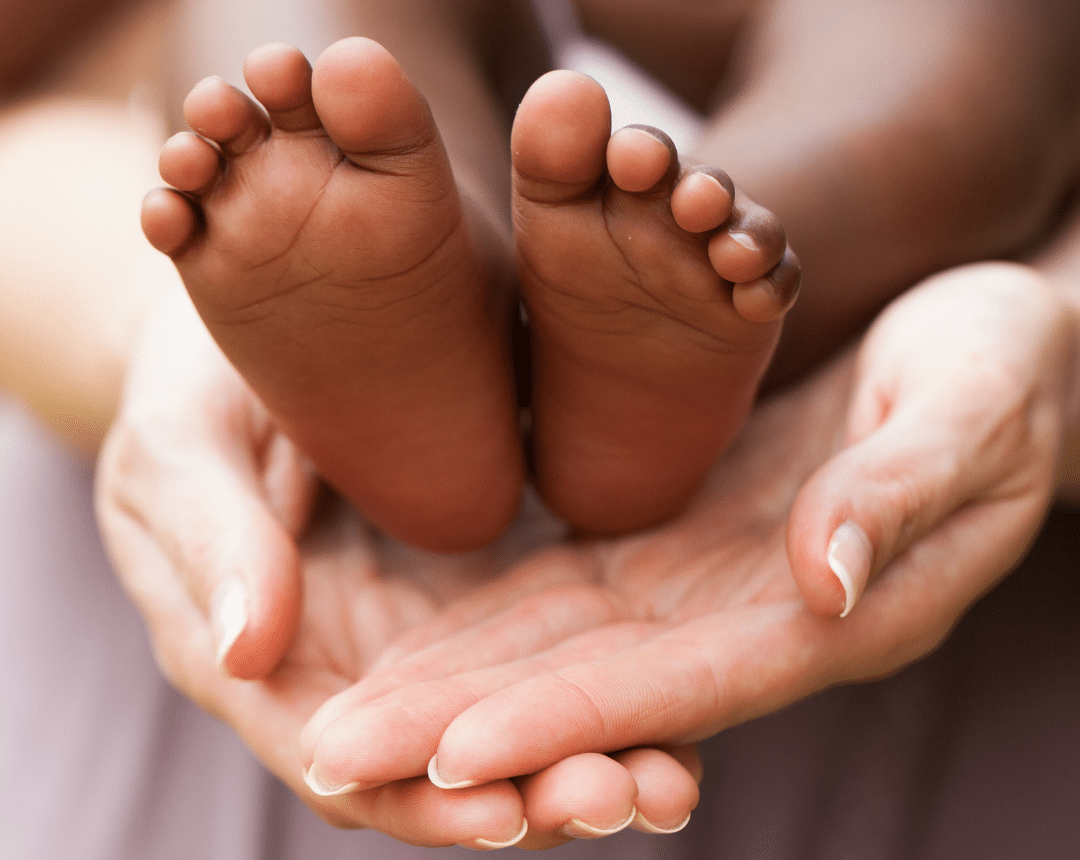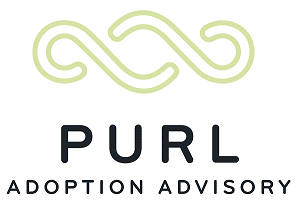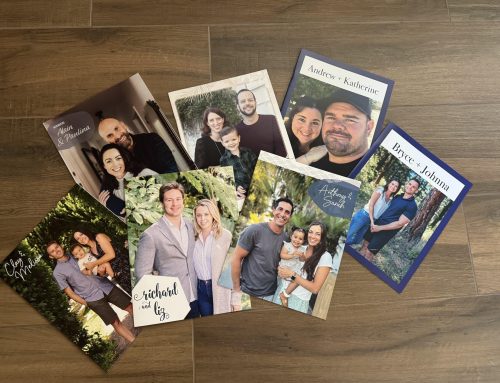
Explore the complexities of transracial adoption in today’s blog post, “Navigating Transracial Adoption,” authored by Ramya Gruneisen. Drawing from her personal experience as a transracial adoptee, Ramya delves into the vital aspects of this journey, offering guidance to adoptive parents and families. With a background in Public Health and a commitment to educating adoption agencies, Ramya provides unique insights on creating a supportive environment and initiating crucial conversations. Join her as she shares valuable practices, emphasizing the significance of representation, community, and empathy in this sensitive process.
—
Education, resources and support are some of the best things that can be given to adoptive parents and families. When it comes to transracial adoptions, the need for these is even more crucial. Adopting a child of another race adds many different components to adoption, some of which may be challenging to navigate for the adoptee and the adoptive family. Even the best prepared parents will still have much to learn. Here are a few positive practices for navigating transracial adoption:
- Have a community of color around your child and family. Your child needs people in their community that look like them, as this will reinforce feelings of belonging and connection.
- Represent and honor your child’s biological culture or race in everyday life. Whether it be books, tv shows or movies, representation is affirming so it needs to be prioritized.
- Acknowledge where you need help and where your limitations are. As a parent, you cannot do it all, do not be afraid to ask for help when you need it and utilize the post adoption resources available to you.
- Find counselors, mentors, or people in the community that are the same race as your adopted child and allow them to walk closely with your family. One of the best resources available to adoptive families is other adoptive families, allow them to support and encourage you as you walk your adoption journey. Additionally, counseling and mentors are incredibly beneficial for adoptees and can provide safe spaces for them to process their story and work though trauma.
- Initiate and engage in conversations about racial injustice, stigma, bias and discrimination. Do not wait until your child brings up conversations around these topics, be intentional about carving out time to talk about hard things. Establishing home as safe space for hard conversations will benefit your child in the long run.
- Establish safe and unsafe spaces for your adopted child and be willing to cut out people and places that feel unsafe your child. There may be physical places, spaces and people that may feel unsafe or triggering to your child. Start conversations about what feels safe and what does not.
- Sit in humility, listen, learn and ask questions when you do not understand. As a best practice, never assume, just ask.
- Acknowledge you will never understand your child’s lived experienced as a transracial adoptee and be willing to believe their words as their truth. As an adoptive parent your goal is to hold space, lean in and respond with empathy even when you do not understand.
Additionally, many adoptees, especially transracial adoptees, often feel pressure and obligation to share their story and talk about their adoption simply because they do not look like their family. This can reinforce preexisting feelings of isolation and disconnection. Adoptees have the right to create boundaries of what they are comfortable sharing about their adoption, and parents and siblings have an obligation to uphold those boundaries as an ally.
As a positive practice, families should have conversations about what being an ally looks like to adoptees in their home. This means that adopted children get to set boundaries about they are comfortable sharing and siblings can learn how to tactfully navigate and respond when people ask questions. It is important to understand that adopted children do not owe others their story and may need help learning how to set and uphold boundaries, especially when interacting with curious adults or even their classmates at school.
Providing your children with language so they can stand up and empower one another is essential. Furthermore, adoptive parents and siblings have the responsibility to model and correct others that use inappropriate language surrounding conversations and topics of adoption. Education and correction must be a shared burden that parents and siblings hold as well, please do not assume your child can hold this alone.
Transracial adoption may come with its own unique set of challenges, but thankfully there are post adoption resources and support for families that will equip and prepare you to navigate these hurdles well.
For more resources, please visit: ramyagruneisen.com
—

About the Author:
Ramya Gruneisen is a dedicated advocate and educator in both adoption and Public Health. As a transracial adoptee residing in St. Louis, Missouri, Ramya lends a unique and personal perspective to her work. Collaborating with adoption agencies and prospective families, she shares her story to enrich their understanding of transracial adoption. Ramya works in Public Health with the United States Committee for Refugees and Immigrants (USCRI), where she contributes to Refugee Medical Screening and Refugee Health Promotion programs, emphasizing culturally informed and trauma-informed care for new arrivals. Additionally, she serves as an adjunct professor at Lindenwood University, passionately promoting health and wellness education. Beyond her professional endeavors, Ramya finds joy in quality time with loved ones, mountain climbing, and supporting local sports teams, embodying her commitment to holistic well-being.
—
Be sure to check out other posts about transracial adoption from our Learn Page.

Explore the complexities of transracial adoption in today’s blog post, “Navigating Transracial Adoption,” authored by Ramya Gruneisen. Drawing from her personal experience as a transracial adoptee, Ramya delves into the vital aspects of this journey, offering guidance to adoptive parents and families. With a background in Public Health and a commitment to educating adoption agencies, Ramya provides unique insights on creating a supportive environment and initiating crucial conversations. Join her as she shares valuable practices, emphasizing the significance of representation, community, and empathy in this sensitive process.
—
Education, resources and support are some of the best things that can be given to adoptive parents and families. When it comes to transracial adoptions, the need for these is even more crucial. Adopting a child of another race adds many different components to adoption, some of which may be challenging to navigate for the adoptee and the adoptive family. Even the best prepared parents will still have much to learn. Here are a few positive practices for navigating transracial adoption:
- Have a community of color around your child and family. Your child needs people in their community that look like them, as this will reinforce feelings of belonging and connection.
- Represent and honor your child’s biological culture or race in everyday life. Whether it be books, tv shows or movies, representation is affirming so it needs to be prioritized.
- Acknowledge where you need help and where your limitations are. As a parent, you cannot do it all, do not be afraid to ask for help when you need it and utilize the post adoption resources available to you.
- Find counselors, mentors, or people in the community that are the same race as your adopted child and allow them to walk closely with your family. One of the best resources available to adoptive families is other adoptive families, allow them to support and encourage you as you walk your adoption journey. Additionally, counseling and mentors are incredibly beneficial for adoptees and can provide safe spaces for them to process their story and work though trauma.
- Initiate and engage in conversations about racial injustice, stigma, bias and discrimination. Do not wait until your child brings up conversations around these topics, be intentional about carving out time to talk about hard things. Establishing home as safe space for hard conversations will benefit your child in the long run.
- Establish safe and unsafe spaces for your adopted child and be willing to cut out people and places that feel unsafe your child. There may be physical places, spaces and people that may feel unsafe or triggering to your child. Start conversations about what feels safe and what does not.
- Sit in humility, listen, learn and ask questions when you do not understand. As a best practice, never assume, just ask.
- Acknowledge you will never understand your child’s lived experienced as a transracial adoptee and be willing to believe their words as their truth. As an adoptive parent your goal is to hold space, lean in and respond with empathy even when you do not understand.
Additionally, many adoptees, especially transracial adoptees, often feel pressure and obligation to share their story and talk about their adoption simply because they do not look like their family. This can reinforce preexisting feelings of isolation and disconnection. Adoptees have the right to create boundaries of what they are comfortable sharing about their adoption, and parents and siblings have an obligation to uphold those boundaries as an ally.
As a positive practice, families should have conversations about what being an ally looks like to adoptees in their home. This means that adopted children get to set boundaries about they are comfortable sharing and siblings can learn how to tactfully navigate and respond when people ask questions. It is important to understand that adopted children do not owe others their story and may need help learning how to set and uphold boundaries, especially when interacting with curious adults or even their classmates at school.
Providing your children with language so they can stand up and empower one another is essential. Furthermore, adoptive parents and siblings have the responsibility to model and correct others that use inappropriate language surrounding conversations and topics of adoption. Education and correction must be a shared burden that parents and siblings hold as well, please do not assume your child can hold this alone.
Transracial adoption may come with its own unique set of challenges, but thankfully there are post adoption resources and support for families that will equip and prepare you to navigate these hurdles well.
For more resources, please visit: ramyagruneisen.com
—

About the Author:
Ramya Gruneisen is a dedicated advocate and educator in both adoption and Public Health. As a transracial adoptee residing in St. Louis, Missouri, Ramya lends a unique and personal perspective to her work. Collaborating with adoption agencies and prospective families, she shares her story to enrich their understanding of transracial adoption. Ramya works in Public Health with the United States Committee for Refugees and Immigrants (USCRI), where she contributes to Refugee Medical Screening and Refugee Health Promotion programs, emphasizing culturally informed and trauma-informed care for new arrivals. Additionally, she serves as an adjunct professor at Lindenwood University, passionately promoting health and wellness education. Beyond her professional endeavors, Ramya finds joy in quality time with loved ones, mountain climbing, and supporting local sports teams, embodying her commitment to holistic well-being.
—
Be sure to check out other posts about transracial adoption from our Learn Page.



